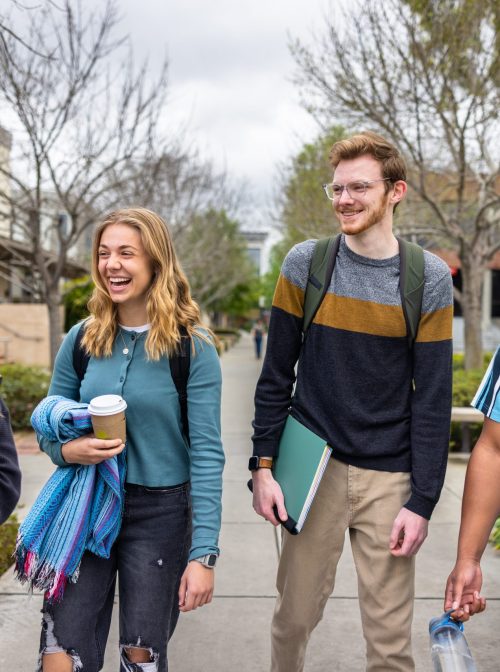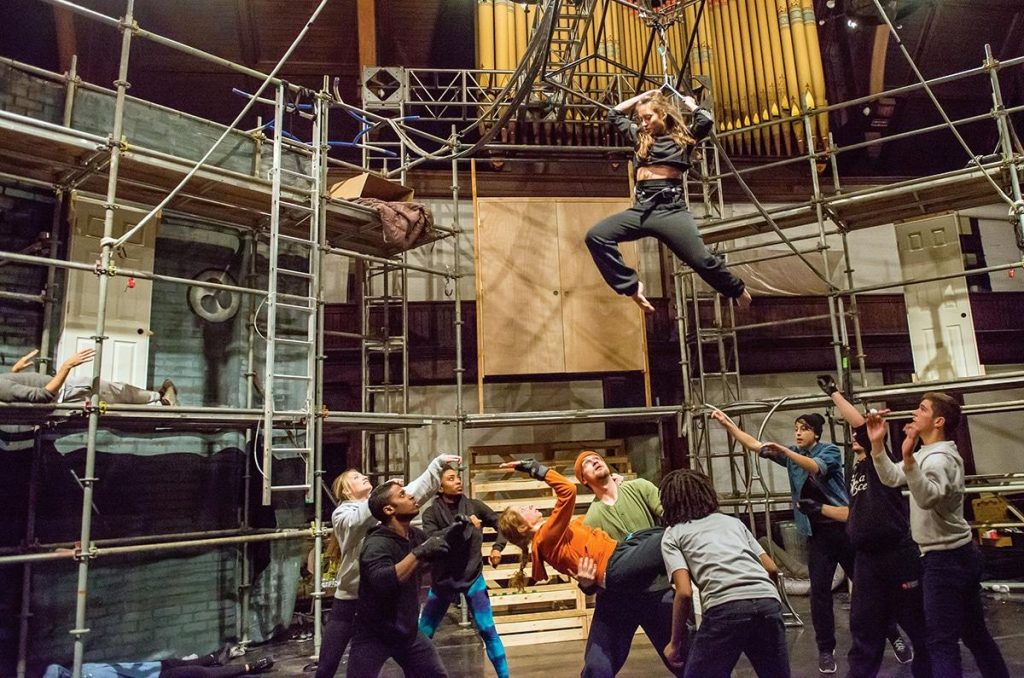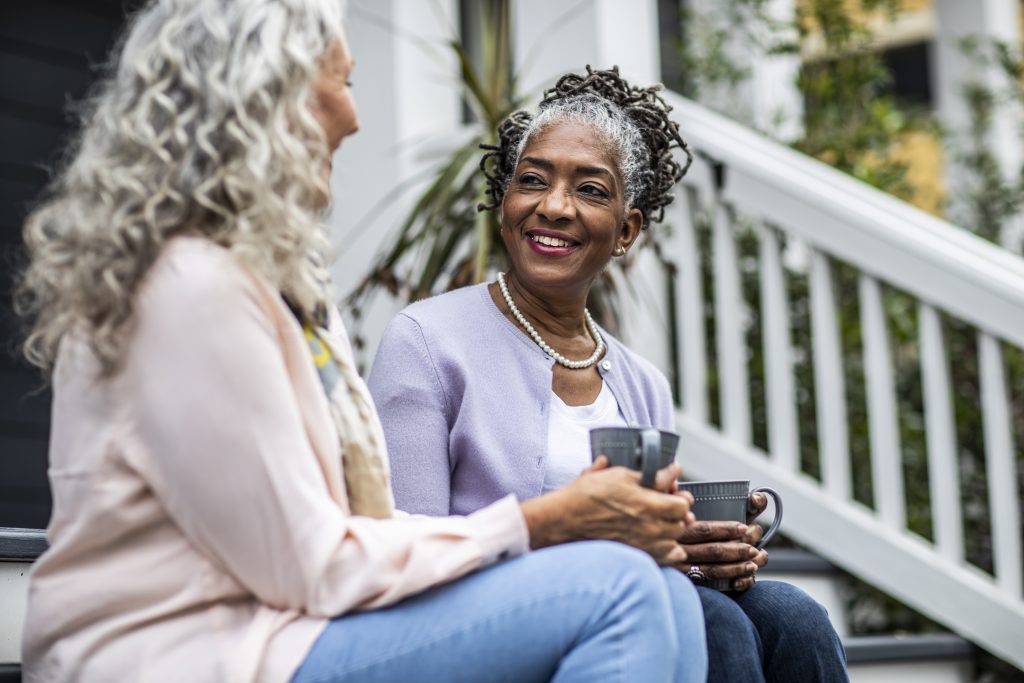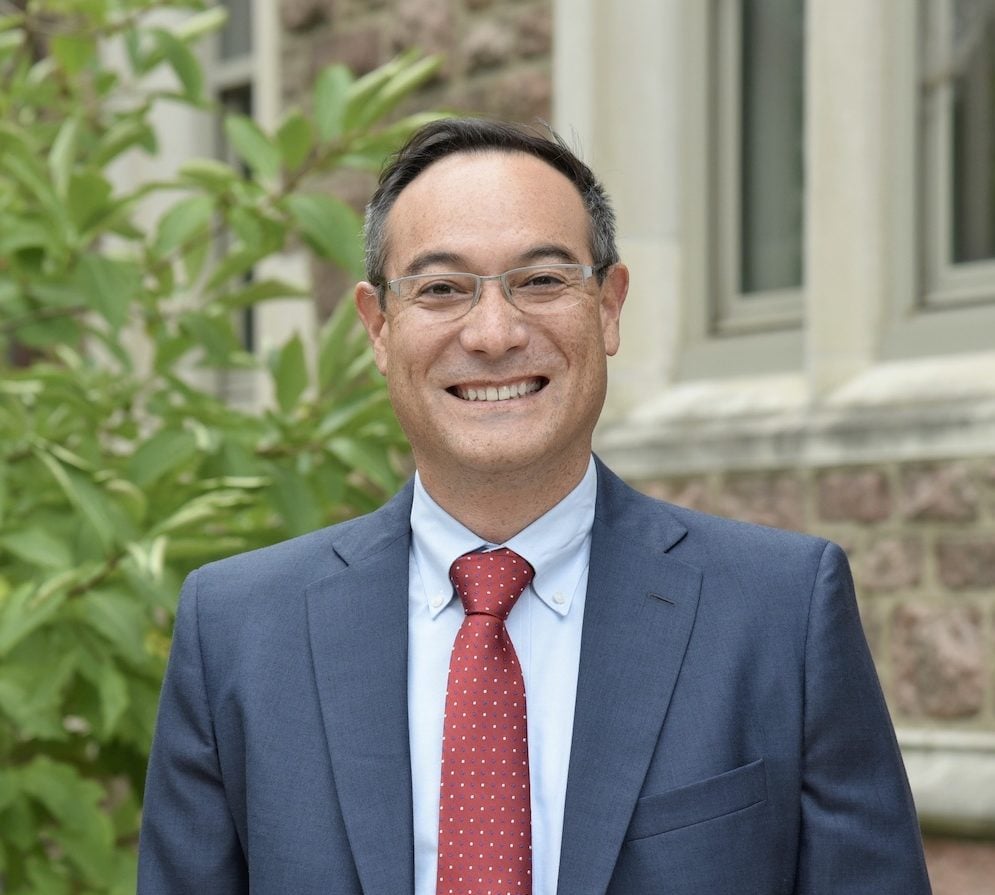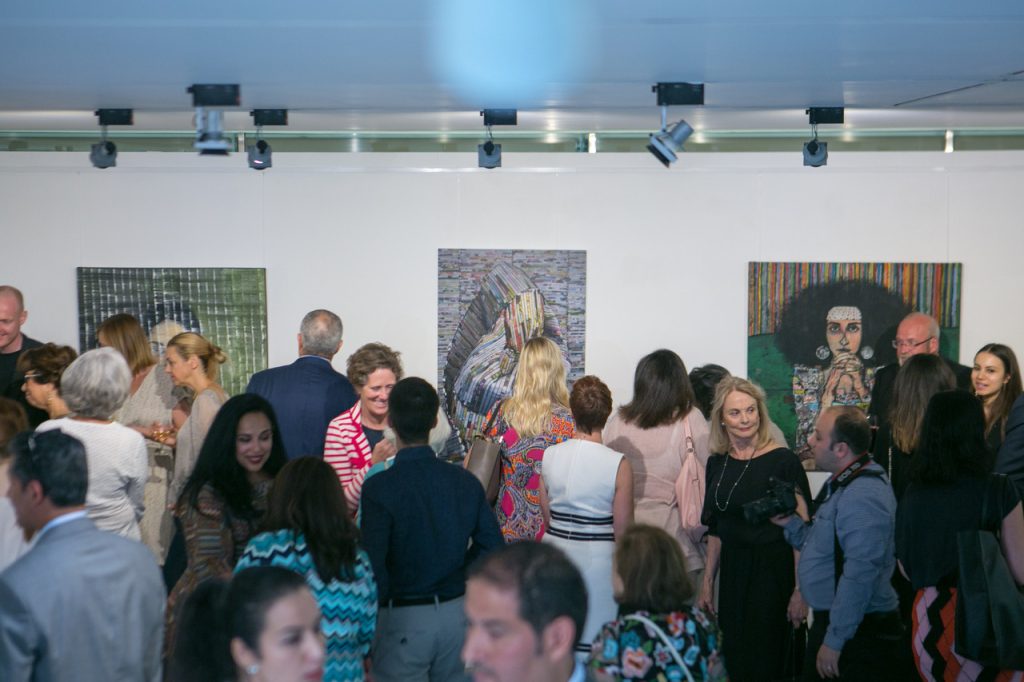College and university campuses are prime places to foster interfaith dialogue and cooperation. At Interfaith America, we recognize and value the importance of higher education campuses for students, staff, and faculty to engage in the work of pluralism. These articles and excerpts showcase examples of cooperation and engagement on higher ed campuses.
For additional assistance, check out our resources and articles on the higher education sector. Interfaith America works with hundreds of colleges across the country to develop courses, programs, and campus-wide plans, so contact us with your questions.
- Inside Higher Ed: Teach Your Students to Be Builders, Not Critics
Eboo Patel calls on college educators to teach students how to build a better social order, not merely criticize the existing one.
In fact, I had been introduced to some of it in college. Unfortunately, my undergraduate professors who highlighted the examples of constructive builders like Jane Addams and Muhammad Yunus had a hard time being heard above the educators emphasizing critique.
Critics are important. Social change doesn’t happen unless there are voices creating dissatisfaction with the status quo.
But right now, we have enough critics. What we need are more builders, more people who know how to create concrete instantiations of a fair, just and inclusive social order.
To achieve that, we need more college educators who are teaching students how to be architects of a better system, not arsonists of the current one.
Colleges and universities have the potential to become bridge-builders by turning out students adept in managing conflict
So what might happen if higher education took on bridge-building? What if a school board in the middle of meltdown could call the local college president and say, “Hey, we’d love to hire some of your graduates to help facilitate some really contentious issues in our school district. We know you prepare them to handle the really hard things.”
This was the topic of a remarkable gathering of bridge-building organizations and higher education association presidents that was assembled by a group called More Perfect and the organization I run, Interfaith America.
In my opening remarks, I quoted two great Catholic philosophers on the role of higher education in a diverse democracy.
The first is John Courtney Murray, who defines civilization as a conversation, the act of “living and talking together.” Barbarism is its opposite, “the lack of reasonable conversation according to reasonable laws.” According to Murray, colleges are special places because they have the potential to model civilization to the extent that diverse views can be “at war intelligibly.”
The second Catholic philosopher is Alasdair MacIntyre, who agrees with Murray on the special role of higher education. Any diverse society will have a range of legitimate conflicts, he said, and the role of the university is to “initiate” its students into these conflicts and then teach them how to have reasoned discussions about them.
MacIntyre then goes on to say that “only from the university can the wider society learn how to conduct its own debates …”
Let us recover this earlier notion of the purpose of a university and employ the considerable resources of our sector of higher education in helping us resolve the conflicts that plague our civic spaces.
- The New York Times: What I Want My Kids to Learn About American Racism
In my final semester at the University of Illinois, I did an independent study with an African American female professor of theater and education. Toward the end of the semester, she invited me to attend a dress rehearsal of a play she had written with her graduate students. “Children are one of the most oppressed groups in our society,” she told me. The play was an experiment at a type of theater that put kids at the center.
I was eager to demonstrate how much I had learned in our independent study and was the first person to stand during the talk-back session after the performance. My professor smiled broadly when she saw me. I used a tone dripping with scorn. I targeted a scene in the play where a child retreats to his own room after a fight with a parent. In front of the entire audience, I declared my professor and her graduate students guilty of racism and classism for writing a character who had his own room. “What about all the families where kids don’t have their own rooms? Or the Black and brown families that don’t have houses? Don’t you realize that your play is only further oppressing them?”
The cast stared at me in disbelief. There were no more questions or comments from the audience. My critique effectively shut everything else down.
I had hoped my professor would be proud of me. So the email she sent came as a total surprise. I remember the contents as if I read them yesterday.
Her students, she wrote, had worked so hard on the play and were deeply hurt by my comments. She was hurt, too. Why hadn’t I offered constructive suggestions, she wondered.
She closed with this: Since you were disappointed with the play that these students wrote, you should try your hand at creating something better. It is always harder to create than it is to criticize.
I sat with that email for a long time. My professor was teaching me that devoting yourself to seeing the bad in everything means that you ignore the good and you absolve yourself of responsibility for building things that are better.
I know that there is a role for people who sit in the audience and criticize the show, but it was starting to dawn on me that that’s not who I wanted to be. I wanted to be the person putting something on the stage.
Bridges do not rise from the ground or fall from the sky. People build them, and higher ed can help
I think the University of Utah could easily be a laboratory for interfaith cooperation and a launching pad for interfaith leaders.
University of Utah President Taylor Randall is clearly interested in this kind of work. He speaks of the pioneer heritage of Utah being encoded in the DNA of the university and refers to the university as a place where people can be anchored in their own identity, build bridges with people of other identities, have a wide array of experiences and engage in inspiring work across lines of difference.
He has powerful partners in both Utah Gov. Spencer Cox, who as president of the National Governor’s Association launched the “Disagree Better” initiative, and also The Church of Jesus Christ of Latter-day Saints, which has been emphasizing the importance of reconciliation in this time of polarization.
As church President Russell M. Nelson recently said, “Contention is a choice. Peacemaking is a choice. You have your agency to choose contention or reconciliation. I urge you to choose to be a peacemaker, now and always.”
Amen to that. Or as we say in my Muslim faith, Ameen.
Peacemaking is an ethic. It is also a knowledge base and a skill set. Advancing these is the specialty of universities.
There is a great line about the key role that universities play in a society: If you want a great city, build a great university and wait a hundred years.
A network of great universities has already made Utah a great state.
Our nation needs to be a place where people who disagree about heaven can work together on important issues here on Earth.
This was the conversation taking place in my mind during an event called “The Fate of the Religious University,” hosted by the American Council on Education in Washington, D.C., on Jan. 12. There were serious heavy hitters present: the leaders of major faith-based networks that collectively represent some 400 colleges, and the presidents of Notre Dame, BYU-Provo, BYU-Hawaii, College of the Ozarks, The Catholic University of America, Yeshiva University and Dillard University.
Two things struck me about the gathering. First, these institutions were making the case for their importance based on goals that they share with progressives, rather than principles that typically code as exclusively conservative, like religious freedom or moral character. There were panels on increasing college affordability, improving graduation rates and focusing applied research in ways that benefit the poor and marginalized. And there was a clear demonstration that faith-based schools did each one of these things exceedingly well.
The message of these schools to their secular counterparts is clear: There are so many objectives that we share and matters on which we can work together. Let’s focus there. Let’s help poor students get an education and a better job. Let’s make sure that our faculty focus on research that lifts everyone up. That’s so much better than taking up opposing positions in the culture wars.
The second thing that struck me was that these various faith-based networks were making the case for the importance of their work as a collective. Latter-day Saints, Catholics, Evangelicals, Jews — there are huge differences between these communities, to include differences of doctrine, ritual, ecclesiology, you name it. And the stakes could not be higher. It’s not just about how you should live life on Earth, but about how you are going to spend eternity.
And yet here they were making the case together: Diverse faith-based colleges are assets not just for their own particular communities, but for the broader nation. We excel at what everybody in higher education is trying to improve. We have poor kids of a variety of racial (and, in some cases, religious) backgrounds at our schools, getting an education, learning real-world skills, lifting each other up, working well together and graduating. And we do this because of our faith, not in spite of it.
In other words, respect our values. The secular world might not understand all of what we believe and every reason we do what we do, but can’t you see the results? The least you can do is affirm that our religious identity is an asset. It is what drives our commitment and results in our excellence.
We often take it for granted, but freedom of religious expression is a rare achievement in human history.
Imagine for a moment that all of the institutions founded by faith communities vanished from your city.
In Chicago, where I live, here is what would be gone: Loyola and DePaul universities, Wheaton College, Northwestern and Rush Hospital, plus the Catholic K-12 schools that educate nearly 100,000 students in the Chicagoland area. Not just the worship spaces of Fourth Presbyterian Church, Temple Sinai and the Downtown Islamic Center, but their tutoring programs, soup kitchens, conference spaces and Thanksgiving turkey drives.
On a national scale, the disappearance of institutions founded by faith communities would render our civic landscape literally unrecognizable. Consider, for example, the disaster relief agencies founded by The Church of Jesus Christ of Latter-day Saints and by Southern Baptists, which help countless people recover after earthquakes, tornadoes and hurricanes.
Or think about the 230 Catholic colleges and universities in the country, the 120 institutions of higher education founded by Methodists, or the nearly 150 run by evangelical Christians. The vast majority of these schools educate students who are not of their community.
The great constitutional promise of America is freedom of religion. The great genius of America follows from that promise: if you give people the freedom to express their faith, they will use that freedom to build up their nation. They will take the inspiration of their faith, plant it in American soil, and grow out of it institutions that serve people of all faiths and philosophies, from atheist to Zoroastrian.
We are so accustomed to this that we take it for granted. But the truth is that this freedom of religious expression is a rare achievement in human history.
- Deseret News: Building bridges
What higher education owes a religiously diverse democracy.
Higher education owes America graduates who are competent professionals, effective leaders and ethical citizens with the knowledge base and skill set to shape faith into a bridge of cooperation, thereby strengthening our religiously diverse democracy.
The organization I lead, Interfaith America, in partnership with professors Matt Mayhew and Alyssa Bryant Rochenbach, recently completed the most comprehensive evaluation of how higher education is performing with respect to the challenge of religious diversity. The headline is that there are some hopeful signs, but there is a long way to go.
Here are some hopeful signs:
- Ninety-six percent of college students said that they respect people from different religions.
- Ninety-three percent report having an interfaith friendship.
- Eighty-nine percent said that it is important for people of different faiths to work together on matters of common concern.
- Seventy percent said they were committed to bridging religious divides.
- Deseret News: The paradox of privilege
Is the push for diversity training working?
What we have in the United States is to be cherished and strengthened.
We do that by exercising the muscles of engagement across difference: to expand the knowledge base, to learn the skills, to nurture the qualities of diversity work. Bridges of cooperation don’t fall from the sky or rise from the ground — people build them.
The question is how do we do this?
I think the way that Egyptian Muslim international student flipped the script of DEI work is worth reflecting on. She heard the word “privilege” associated with being American, Christian and of European heritage, and she assumed that the speaker was making a positive comment. After all, why wouldn’t you be proud of what you believe and where you’re from? So she responded in kind, speaking with pride from the content of her tradition rather than somebody else’s social construction of her identity.
After the momentary confusion passed, something remarkable happened. The other students started following the script offered by their classmate. People spoke about trips to their ancestral villages in countries like Italy and Croatia and learning the stories of what their great-great-grandparents built and why their great-grandparents emigrated. One said that she had started attending Bible study at the Lutheran church her grandfather had built and was feeling a deeper connection to her faith.
And that, I think, is what DEI work ought to look like.
- The Chronicle of Higher Education: Today’s DEI Is Obsessed With Power and Privilege
It was precisely for these reasons that I brought Appiah on to my Interfaith America podcast. As I was re-reading his work in preparation for that conversation, I found myself wondering: What if people doing campus diversity work were steeped in Appiah’s cosmopolitanism paradigm rather than Ibram X. Kendi’s antiracism framework? What if training for diversity positions involved discussing complicated scenarios from relevant Ethicist columns rather than applying DEI dogmas that result in art-history professors getting fired?
I asked Appiah if he would accept a consulting offer from a university president looking to shift her campus diversity program away from antiracism to cosmopolitanism.
He said he’d consider it. But he also said that applying a cosmopolitanism approach on campus isn’t really that hard. He pointed to the interfaith programs that Rabbi Yehuda Sarna and Imam Khalid Latif organize at his own institution, New York University. This is what diversity work should be, he emphasized: conversations between people with fundamental differences seeking to learn from one another, identify commonality, and find ways to cooperate. He noted that it was a devoted Catholic, the former New York University President John Sexton, who was the strongest supporter of these programs. And Appiah ended by saying that he would like to see more atheists involved.
Diversity work can be about creating spaces for people from the broadest possible range of identities and belief systems to constructively encounter one another. Civilization is defined by living and talking together. And campuses should model that.
- The Chronicle of Higher Education: Faith Is the Diversity Issue Ignored by Colleges. Here’s Why That Needs to Change.
Failing to educate the next generation of citizens on the role of religion in our democracy is like failing to teach doctors how the circulatory system works.
I speak on more than 20 campuses a year, and one thing that has struck me recently is that nearly all of the colleges I visit are expanding diversity education. Whether it’s first-year orientation programs, new general-education requirements, or training that is mandatory for student leaders, engaging race, gender, and sexuality is fast becoming a standard part of a college education.
This is a positive development. Our society expects colleges to define what it means to be an educated person and to advance their students to that standard. Any reasonable definition of an educated person in this diverse democracy has to include knowledge of America’s history and traditions (the good, the bad, and the ugly) with respect to race, gender, and sexuality, and the skills to teach, coach, build, heal, and lead in environments that are increasingly defined by that diversity.
After listening to the laudable plans of college administrators and faculty members for strengthening diversity education, I often inquire about how much time they are allotting to increasing their students’ understanding of religious identity and diversity. Answers range from “I’m not sure” to “Probably not enough,” along with the occasionally surprised look that the question was even raised.
What this means is that, in an era when colleges are expanding their engagement of diversity issues, and at a time when religion plays a central role in public life and global affairs, religion continues to be the dimension of diversity that many institutions leave out.
- The Chronicle of Higher Education: Colleges Should Be Nurturing Interfaith Leaders
Any institution that promises to prepare global citizens has to take religious diversity seriously.
Any college that promises to prepare global citizens has to take religious diversity seriously enough to educate their students to be interfaith leaders.
An interfaith leader is someone with the vision, knowledge base, and skill set to create the spaces, organize the social processes, and craft the conversations such that people of different religions can share a common life together.
To begin with, interfaith leaders need a vision for a healthy religiously diverse democracy. They know that religion is about fundamental things; that diversity is not just about the differences you like but also the differences you don’t like; that democracy is not just about the opportunity to vote but the ability to make your personal convictions public. In such a society, conflicts are to be expected. A healthy religiously diverse democracy is a place where people who disagree on some fundamental things do so without violence and in a manner that allows them to work together on other fundamental things.
12. Inside Higher Ed: Why Campuses Need Centers for Pluralism
Now more than ever, colleges must help students learn to cooperate across differences.
Now is the time for your college to make pluralism a central principle of campus life.
Yes, now, as you watch dueling protests on your quad and realize that diversity, free speech and social justice advocacy are important values for a college to uphold but incomplete without a commitment to cooperation across difference.
